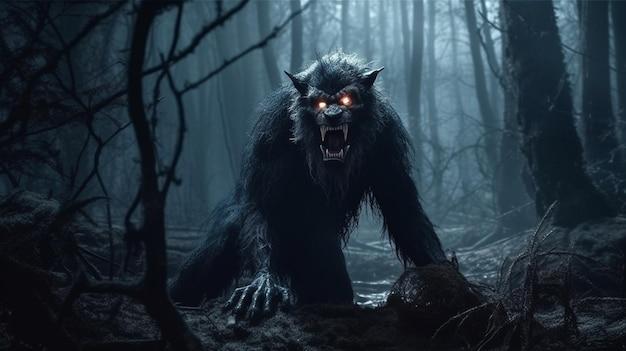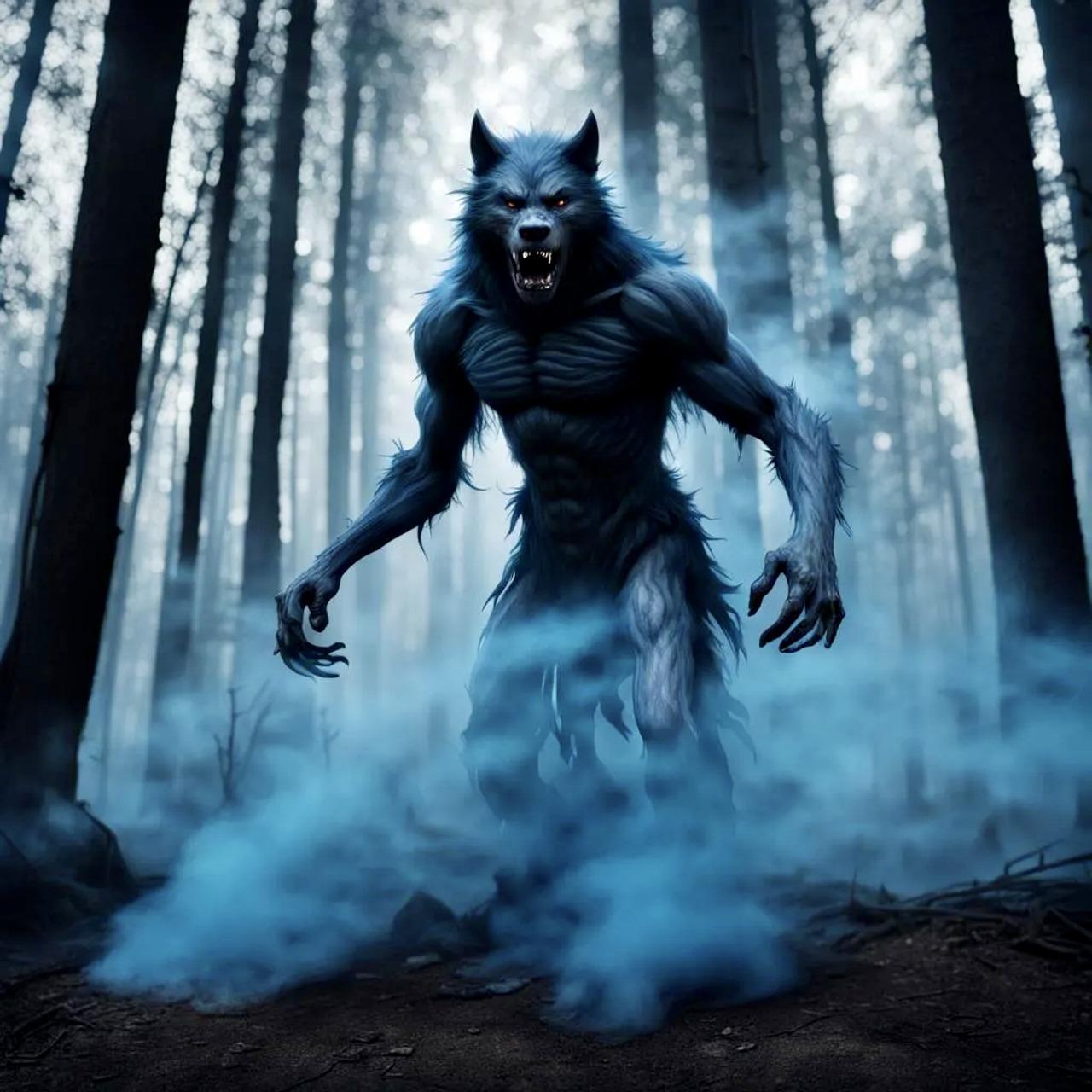In the realm of myths and legends, one creature that has captured our imagination for centuries is the werewolf. These iconic entities, half-human and half-wolf, have been the subject of countless stories and folklore from around the world. But amidst the fascination and intrigue, a pressing question arises: can someone be born a werewolf?
In this blog post, we will delve into the age-old debate of werewolf origins. We’ll explore the theories surrounding their existence, the transformative process, and whether one can truly be born with werewolf traits. Join us on this journey as we separate fact from fiction and attempt to shed light on the mysterious world of werewolves.
Werewolves have frequented our collective imagination, often portrayed as ferocious protectors of humans or ominous creatures lurking in the shadows. We’ll explore the complex relationship between werewolves and humans, uncovering the truth behind their role in society and legends.
From dietary restrictions to the excruciating agony of transformation, we’ll also investigate the limitations and struggles faced by those afflicted with lycanthropy. Discover what lies beneath the surface as we unveil the things werewolves cannot eat and explore the reasons behind the pain endured during their metamorphosis.
So, grab a silver bullet and prepare to unearth the secrets of werewolves as we embark on this thrilling journey together. Get ready to have your questions answered and your curiosity piqued as we dive deep into the enchanting world of these extraordinary creatures!
Can You Be Born a Werewolf
Werewolves have long been a fascinating topic in folklore and pop culture. The idea of transforming from a human into a wolf-like creature during the full moon has captured the imaginations of people for centuries. But is it possible for someone to be born a werewolf? Let’s dive into the myths, legends, and scientific explanation behind this mysterious phenomenon.
The Legends and Lore
In centuries past, stories of werewolves often involved an individual who was either cursed or born into a family with a lineage of lycanthropy. These tales often depicted werewolves as powerful, bloodthirsty creatures that wreaked havoc under the light of the full moon. While these legends may make for great storytelling, they’re just that – legends.
Science vs. Fiction
In the scientific realm, the notion of someone being born a werewolf is, unfortunately, nothing more than fiction. Werewolves, as mythical creatures, exist purely in the realms of imagination and storytelling. There is no scientific evidence to support the idea that a human can physically transform into a wolf-like creature.
Clinical Lycanthropy: A Psychological Disorder
However, it’s important to note that some individuals experience a condition called clinical lycanthropy. This rare psychological disorder causes people to believe that they are, in fact, transforming into animals, including wolves. These individuals often exhibit delusions, hallucinations, and a distorted sense of reality. Though it may seem like they are “becoming” werewolves, it’s crucial to understand that it is a mental health condition and not a physical transformation.
Embracing Your Inner Wolf
While being born a werewolf may not be possible, the fascination with these mythical creatures is understandable. Their allure lies in their primal power and connection to nature. If you find yourself drawn to the idea of werewolves, perhaps it’s less about physically transforming into a beast and more about embracing your own wild side or exploring the mysteries of the natural world.
The Wolf Within
In truth, we all have a little bit of the wolf within us. Metaphorically speaking, wolves represent strength, loyalty, and a deep primal instinct. Channeling these traits in our daily lives can empower us to tackle challenges with courage and resilience. So, while you may not be able to transform into a werewolf, you can tap into your own inner wolf and embrace the fierce spirit within.
Although the idea of being born a werewolf may seem enticing, it is purely rooted in mythology and folklore. Science has yet to discover any evidence supporting the physical transformation of humans into werewolf-like creatures. However, the allure of werewolves lies in their symbolism and the exploration of our wild side. So, while we may not have the ability to become werewolves, we can still embrace the strength and primal instincts that they represent within ourselves.
Remember, the next time you howl at the moon, it’s just your wild spirit letting loose, not an actual transformation into a mythical creature. Embrace your inner wolf, and let it guide you on your own extraordinary journey through life.
FAQ: Can You Really Be Born a Werewolf?!
Welcome to our comprehensive FAQ section, where we’ll answer all your burning questions about werewolves. Brace yourself for a hair-raising adventure into the mysterious world of these legendary creatures.
Can You Be Born a Werewolf
The short answer is no. Werewolves aren’t born, they’re made! Contrary to popular belief, you don’t inherit lycanthropy through your bloodline. It’s not like inheriting your great aunt’s taste in fashion. Lycanthropy is typically transmitted by being bitten or scratched by another werewolf. So, unless you’ve had an unfortunate encounter with a fang-bearing furry friend, you’re safe from turning into a werewolf. Phew!
Do Werewolves Protect Humans
Absolutely! Contrary to their snarling appearances, werewolves aren’t all about wreaking havoc. In fact, many werewolves willingly take on the role of protectors, often acting as guardians of humans. They use their powerful senses and remarkable abilities to safeguard those in need. Think of them as nature’s very own furry superheroes. Just don’t expect them to wear spandex suits!
What Can Werewolves Not Eat
While werewolves may have a penchant for the carnivorous side of life, there are a few things they should steer clear of. Garlic might be great for repelling vampires, but it won’t do much to deter a werewolf. Silver, on the other hand, is a big no-no. It’s like kryptonite to them, causing excruciating pain and hindering their regenerative abilities. So, no silverware for these guys!
Why Is It Painful to Turn into a Werewolf
Ah, the transformation. It’s not as glamorous as Hollywood would have you believe. When a human is about to undergo the metamorphosis into a werewolf, it’s far from painless. Bones crack, muscles stretch, and fur sprouts in places it shouldn’t. It’s like a werewolf-themed yoga class gone wrong. So, next time you complain about a stiff neck, just be grateful you’re not sprouting a tail!
How Long Do Werewolves Live For
Werewolves boast impressive longevity compared to us mere mortals. On average, they can live up to a whopping 150 years! That’s a lot of full moons to howl at. Of course, their extended lifespan means they’ve witnessed some truly extraordinary events throughout history. Imagine being able to recount tales from the signing of the Declaration of Independence or rocking out at Woodstock. Talk about a time-traveling party animal!
What Are Werewolves’ Weaknesses
Even though werewolves are formidable creatures, they do have a few kryptonite-esque weaknesses. As mentioned earlier, silver is their Achilles’ heel. A well-placed silver bullet can put a swift end to their nocturnal prowling. Additionally, like any responsible pet owner, werewolves need to stay on top of their flea control. Wolfsbane, a poisonous plant also known as aconite, can be deadly to these furry folks. So, remember, no silver jewelry or bouquets of aconitum on their birthday!
Where Are Werewolves Found
Werewolves aren’t simply confined to the pages of horror novels or the silver screen. They can be found throughout the folklore of various cultures, including European, Native American, and even some African traditions. However, their exact whereabouts are a well-guarded secret. Sightings have been reported in eerie forests, mist-shrouded moors, and spooky swamplands. Just don’t expect them to sign autographs or pose for selfies. They’re a bit camera-shy!
How Do Werewolves Speak
Communication among werewolves goes beyond mere human speech. They have their own unique form of vocalization, involving a combination of growls, snarls, and eerie howls. It’s like a furry language of its own. While it may be a little intense for casual dinner conversation, it’s perfect for coordinating a moonlit hunt or letting out a spine-chilling warning. So, if you ever encounter a werewolf, be prepared for a truly hair-raising conversation!
Now that we’ve scratched the surface of werewolf lore, we hope you’ve had your fill of fun facts and spooky tidbits. Feel free to share this article with your fellow werewolf enthusiasts and remember, when it comes to werewolves, curiosity is definitely allowed!
Disclaimer: The content of this article is purely fictional and should be read with a sense of humor. No werewolves were harmed in the making of this FAQ.

